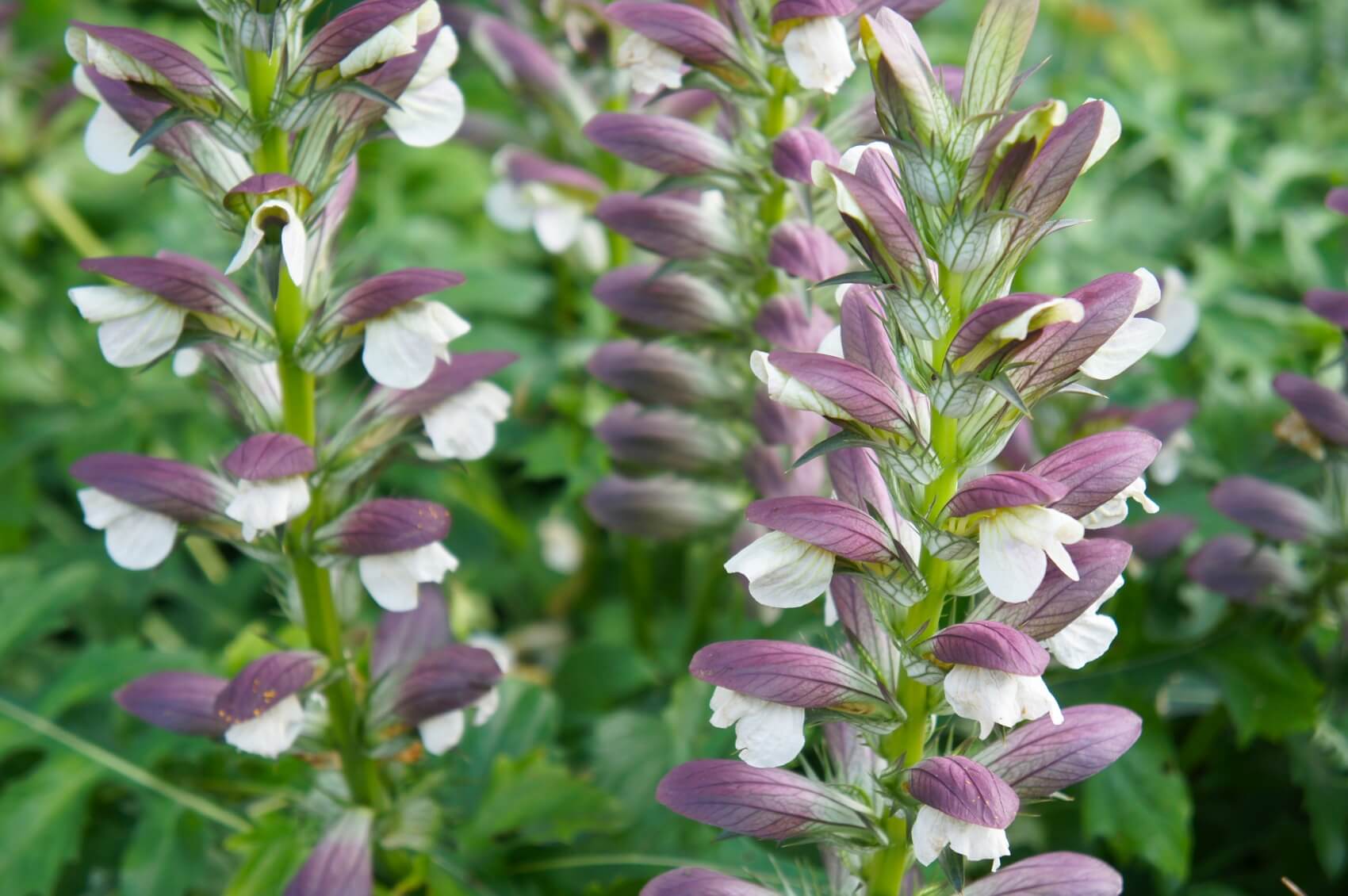
The acanthus plant, also known as Acanthus, is a fascinating and enigmatic species that has intrigued botanists and garden enthusiasts for centuries. Renowned for its striking appearance and distinctive leaves, the acanthus is not only aesthetically pleasing but also holds a rich history and significance in various cultures around the world.
In this article, we will delve into the world of acanthus plants, uncovering 17 intriguing facts that will leave you in awe of their beauty and diversity. From their symbolic associations with ancient Greek architecture to their medicinal properties and remarkable adaptability, you will discover a wealth of information about this remarkable plant.
Whether you are a horticulture enthusiast, a history buff, or simply curious about the wonders of nature, join us on this journey to uncover the secrets and mysteries of the acanthus plant.
Key Takeaways:
- Acanthus, also known as Bear’s Breeches, has a rich history dating back to ancient times and has been a symbol of beauty and endurance in various cultures.
- The Acanthus leaf has inspired art, architecture, and literature for centuries, showcasing its resilience, adaptability, and timeless beauty in the natural world.
The Origins of Acanthus
Acanthus, also known as Bear’s Breeches, is a perennial plant native to the Mediterranean region. Its name comes from the Greek word “akantha,” which means thorn or spine, referring to the spiky leaves of the plant.
The Symbolic Acanthus Leaf
The iconic Acanthus leaf has been used as a decorative motif in architecture, art, and design for centuries. Its intricate and elegant form has symbolized longevity, endurance, and vitality in various cultures throughout history.
An Ancient Connection
Acanthus has a rich history dating back to ancient times. It is believed to have originated in Greece, where it was prominently featured in the Corinthian order of architecture, one of the classical orders of ancient Greek and Roman architecture.
Medicinal Properties
Acanthus has been utilized for its medicinal properties in traditional practices. It is believed to have anti-inflammatory, diuretic, and analgesic effects, making it useful in treating various ailments.
Acanthus in Mythology
In Greek mythology, the Acanthus plant is associated with the nymph Acantha. According to myth, Apollo, the god of music and poetry, was captivated by Acantha’s beauty and turned her into a spiky plant to protect her from the attention of others.
Ancient Architectural Marvels
Acanthus leaves can be found incorporated into the design of many ancient architectural masterpieces. From the famous Acanthus scrolls in the Parthenon to intricate carvings on Roman columns, the plant has left an indelible mark on architectural history.
Acanthus Inspired Art and Design
The beauty of the Acanthus leaf has inspired artists and designers throughout the ages. From intricate wood carvings to elaborate wallpaper patterns, its distinctive shape has been replicated in various art forms.
Environmental Adaptability
Acanthus is known for its resilience and adaptability. It can thrive in a wide range of climates and soil conditions, making it a hardy plant suitable for diverse environments.
Ornamental Plant
Acanthus is a popular choice for ornamental gardens due to its striking foliage and flowers. Its tall spikes adorned with white, pink, or purple flowers can add a dramatic touch to any landscape.
Historical Significance
The Acanthus leaf holds historical significance beyond architecture and design. It has been used as a motif on ancient coins, engraved on ancient artifacts, and depicted in ancient artwork, reinforcing its cultural significance.
Acanthus and the Arts
The Acanthus leaf has deeply influenced the world of art. It can be seen in various forms of artwork, including paintings, sculptures, and ceramics, serving as a symbol of beauty and creativity.
Acanthus in Modern Landscaping
With its timeless beauty, Acanthus remains a popular choice for modern landscaping. Its ability to attract pollinators, such as bees and butterflies, further enhances its appeal in garden design.
Acanthus in Literature
The mesmerizing Acanthus leaf has also found its way into literature. From ancient epics to contemporary poetry, writers have often drawn inspiration from the plant’s enchanting form and symbolism.
The Intricacy of Acanthus Carvings
One of the distinctive features of Acanthus is its intricately carved leaves. The delicate detailing and interwoven patterns of the leaves have provided artisans with a canvas for their craftsmanship for centuries.
Acanthus as a Natural Border
The lush foliage and robust growth of Acanthus make it an excellent choice for natural borders and hedges. It can provide privacy and delineate spaces while adding a touch of beauty to the surroundings.
Acanthus and Traditional Crafts
Throughout history, Acanthus has played a significant role in traditional crafts. From furniture to textiles, its influence can be seen in the skilled craftsmanship of artisans who incorporate the plant motif into their creations.
Acanthus: A Source of Inspiration
Overall, the 17 enigmatic facts about Acanthus prove that this captivating plant has stood the test of time. Its beauty, symbolism, and versatility continue to inspire and leave an everlasting impression on art, design, and the natural world.
Conclusion
Acanthus, with its fascinating history and intricate design, continues to captivate people around the world. From its origins in ancient Greece to its enduring presence in art and architecture, this plant has left an indelible mark on human culture.We have explored 17 enigmatic facts about Acanthus that shed light on its symbolism, uses, and remarkable characteristics. From its association with the Greek god Apollo to its use in the iconic Corinthian columns, Acanthus has long been revered for its beauty and versatility.Whether you are a garden enthusiast, an art lover, or simply curious about the natural world, Acanthus offers a wealth of intrigue and inspiration. Its lush foliage, spiky flowers, and architectural significance make it a captivating subject of study.As you delve deeper into the enigmatic world of Acanthus, you will uncover even more secrets and wonders, unveiling the rich tapestry of history and nature that this plant embodies. So, embrace the allure of Acanthus and let its enchantment sweep you away.
FAQs
Q: What is the origin of Acanthus?
A: Acanthus is believed to have originated in the Mediterranean region, specifically in the southern parts of Europe and North Africa.
Q: What is the significance of Acanthus in Greek mythology?
A: In Greek mythology, Acanthus was believed to have sprung from the burial mound of the nymph Amalthea. It became associated with the god Apollo and symbolized eternal life and immortality.
Q: What is the Corinthian order, and why is Acanthus important in it?
A: The Corinthian order is a type of classical architectural style characterized by fluted columns topped with elaborate capitals. Acanthus leaves are a prominent feature in Corinthian capitals, symbolizing beauty, nature, and growth.
Q: Can Acanthus be grown in gardens?
A: Yes, Acanthus is commonly grown in gardens for its attractive foliage and striking flowers. It is a hardy perennial that thrives in well-drained soil and partial shade.
Q: What are some other uses of Acanthus besides its ornamental value?
A: Acanthus has been used medicinally in traditional herbal remedies for various ailments. It has also been used for culinary purposes, adding a unique flavor to dishes.
Q: Are there any symbolic meanings associated with Acanthus?
A: Yes, Acanthus is often associated with longevity, vitality, and resilience. It represents the cycle of rebirth and the eternal nature of life.
From ancient symbolism to modern landscaping, Acanthus leaves have captivated imaginations for centuries. Their intricate beauty and adaptability make them a timeless source of inspiration across art, architecture, and design. Acanthus plants also boast surprising medicinal properties, adding to their enigmatic allure. If you're curious about other fascinating plants, consider exploring the intriguing world of Bears Breeches, another species with a rich history and unique characteristics.
Was this page helpful?
Our commitment to delivering trustworthy and engaging content is at the heart of what we do. Each fact on our site is contributed by real users like you, bringing a wealth of diverse insights and information. To ensure the highest standards of accuracy and reliability, our dedicated editors meticulously review each submission. This process guarantees that the facts we share are not only fascinating but also credible. Trust in our commitment to quality and authenticity as you explore and learn with us.


